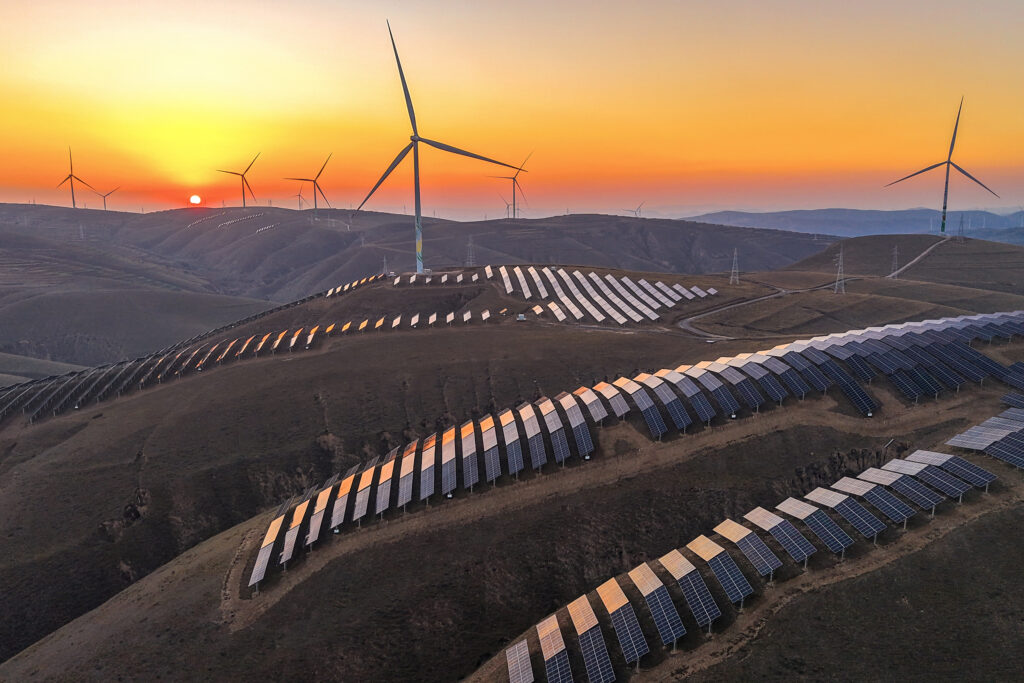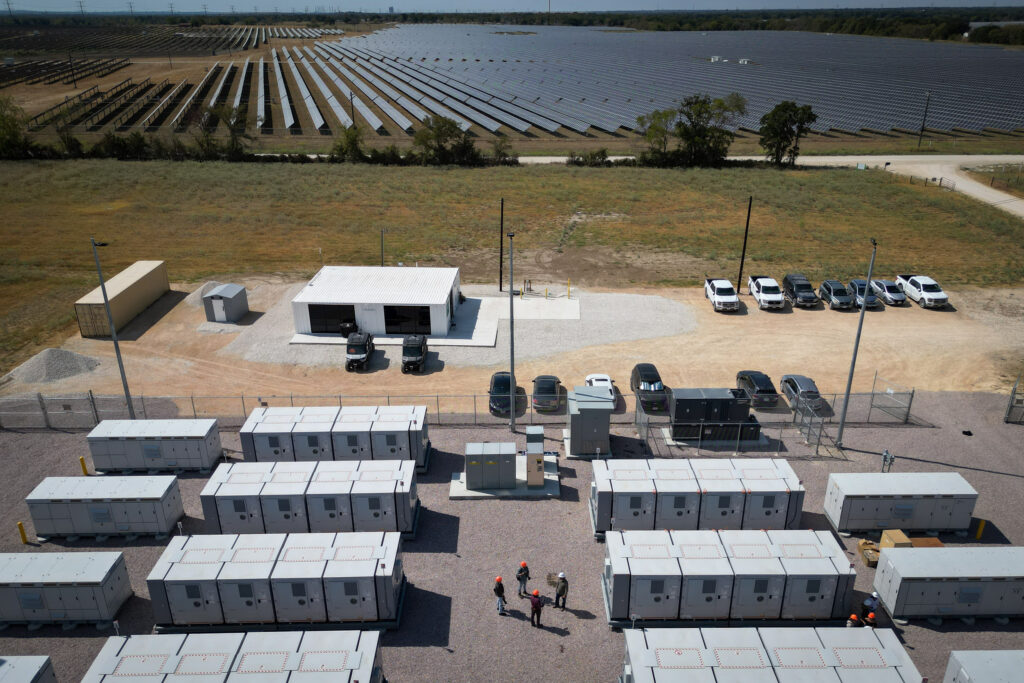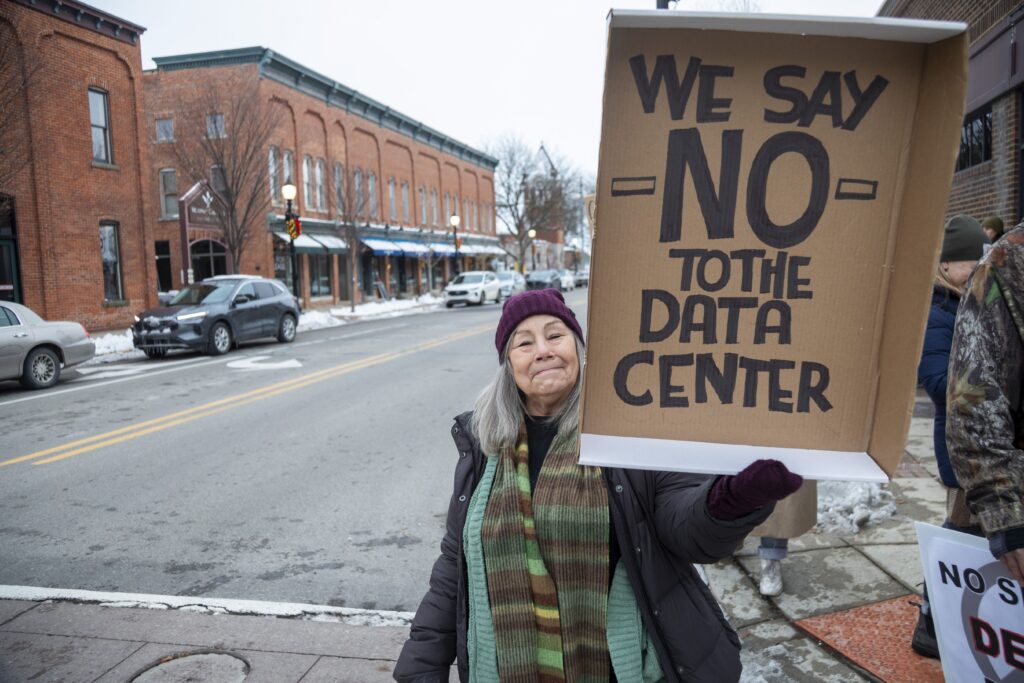An Ohio utility has won an important fight over who assumes the financial risk of data centers, and the result may help guide decisions across the country.
Data centers will now need to pay penalties if they say they are going to build a project and then fail to live up to commitments, which provides some protection to other consumers.
Ohio utility regulators issued their decision last week, approving a proposal from Columbus-based American Electric Power (AEP) that sought to create a new rate class for data centers. The losers are corporate giants such as Google and Meta that now have special rules that may put them on the hook for additional costs.
This was a hard-fought case, litigated for more than a year, and I expect that it will inform decisions across the country at a time when electricity demand from data centers is exploding. Utilities and regulators can now look at the thousands of pages of testimony from Ohio to get a sense of the arguments on all sides.
The ruling recognizes that data centers “pose a different type of risk, as well as an increased amount of risk,” said the Public Utilities Commission of Ohio in its 5-0 decision.
The new policy probably is a win for consumers, as shown by the fact that Ohio consumer advocates supported AEP’s position. And it’s a loss for data centers, since the commission rejected an alternative plan from the companies along with the companies’ main arguments.
But let’s not pop any corks. The new rules—which only apply to AEP’s territory in Ohio—help to rein in some of the excesses of projects that can be highly speculative, but there are many other concerns related to data centers that remain unaddressed.
Here’s the policy: The rules apply to new data centers with a peak demand of at least 25 megawatts, which is a lot—the equivalent of a small town. Note the word “new.” If a data center is already built or already has an agreement with AEP to receive power, this policy doesn’t apply.
Data centers would need to pay for at least 85 percent of the energy they sign up to use, even if they end up using less. This provision helps to cover the costs of building infrastructure to serve the new development.
The requirements would last for 12 years in a typical example, which would include a four-year ramp up to full capacity. After that, the contract between AEP and the data center would automatically continue unless either side gives three years’ notice of an intent to terminate.
The policy also allows for a data center to immediately end the contract after eight years by paying an exit fee equivalent to three years of electricity use.
“I think this is an improvement on the status quo,” said Ari Peskoe, director of the Electricity Law Initiative at the Harvard Law School Environmental and Energy Law Program.
But he thinks that greater consumer protections are needed.
“My view is that the data centers are underpaying,” he said.
He explained that data centers are going to require grid upgrades that are paid for by all of AEP’s Ohio customer base. Many of those costs will be paid by data centers themselves since they will be major electricity consumers, but there is nothing in the new rules specifying that data centers must cover all of the costs needed to serve them.
Instead, the rules aim to protect against scenarios in which AEP would make investments to serve a data center and then the developer abandons its plans, leaving a portion of the grid that has more capacity than it needs. Excess capacity leads to costs that get absorbed by other ratepayers.
Ideally, the regulations will mean that some of the most speculative data center plans will never reach the stage of making a power agreement with the utility, which makes it easier for AEP to plan for its future needs.
This is in contrast to what happened leading up to AEP’s 2023 moratorium on new data centers. The utility said in filings that companies already building data centers in its territory would need 5,000 megawatts of electricity generating capacity by 2030. This exceeds the current peak demand of the Columbus metro area, which was about 4,000 megawatts at the time of the filing.
In addition to confirmed projects, AEP said it received inquiries from data center companies that would require an additional 30,000 megawatts of capacity. This was the number—which exceeds the peak demand of the entire New England grid region—that led the utility to declare the moratorium.
Now, with the approval of the new rules, AEP has said it will lift the moratorium.
This case has been active since May of last year, which feels like much longer considering how much data center development has accelerated across the country.
Lucas Fykes, director of energy policy for the Data Center Coalition, a membership organization for the data center industry, said his group is disappointed with the Ohio ruling.
“The decision is a stark departure from solutions enacted in other key data center markets and, more consequentially, is a deviation from the long-established, sound ratemaking principles that have carried both Ohio and the nation through periods of electricity demand growth and flat demand,” he said in an email.
Ohio now joins Indiana in having similar approaches to data center policy, and both states did so in response to requests from AEP subsidiaries.
The Indiana Utility Regulatory Commission approved a plan in February stemming from a request from Indiana-Michigan Power, which is owned by AEP. The new policy covers data centers with demand of at least 75 megawatts at a single site or at least 150 megawatts at multiple sites owned by the same company, as Utility Dive reported. Contracts have a 12-year term that includes a ramp-up period and an exit fee, similar to Ohio.
Unlike Ohio, where the process was contested by data center companies, AEP reached a settlement with its adversaries in Indiana, which helped to ease the way to a decision by regulators. It’s not clear to me why the process was smoother in Indiana, but it probably helps that the sides got to know each other in the Ohio litigation and saw value in coming to an agreement.
Suzanne Glatz, a Pennsylvania-based energy policy consultant, sees the Ohio and Indiana policies as replicable because of the way they provide clear consumer benefits but are still within the range of what many businesses would view as reasonable.
“The states that are facing [data center development] will be looking at what Ohio has done and what’s happened in Indiana, and will figure out what fits and what elements make the most sense,” she said.
Any state facing a lot of development needs to make sure its regulations are ready, said Glatz, who has prior experience working for PJM Interconnection, the grid operator for large portions of the Mid-Atlantic, South and Midwest.
“We could end up all paying an awful lot more for our electricity if it’s not done well, and those costs might be also more unevenly spread,” she said. “The other risk is, of course, reliability, because if we don’t do this right, and we don’t recognize where data centers are going to be developed, we could be facing a mismatch of where the generation and transmission are needed versus where the [demand] is.”
The action at the state level is happening in legislatures and regulatory commissions.
This story is funded by readers like you.
Our nonprofit newsroom provides award-winning climate coverage free of charge and advertising. We rely on donations from readers like you to keep going. Please donate now to support our work.
Donate Now
For example, Georgia regulators approved a policy in January that allows Georgia Power, the state’s largest utility, to have new requirements for data centers with electricity demand of 100 megawatts or more. The specifics cover some of the same ground as the Ohio and Indiana rules.
One of the big questions about the current boom is how large it will be. Lawrence Berkeley National Laboratory issued a report in December showing huge differences in forecasts for data center electricity demand, which indicates a lot of uncertainty.
On the high side, forecasters have said data centers may consume more than 400 terawatt-hours by 2030. For perspective, this is close to 10 percent of all the electricity generated in the United States last year.
My main takeaway from the Lawrence Berkeley report is that the forecasts keep growing, which is a hint that the actual numbers in 2030 may be a lot higher than even the highest forecasts.
It also may mean that forecasters are like a blindfolded person throwing at a dart board.
I expect that any large increase in electricity demand will lead to an increase in prices and will put a premium on figuring out new ways for data centers and everyone else to become more efficient. We’re in the early stages of figuring out how this will work, and I feel like many people are underestimating the role that efficiency will play.
In the meantime, policies like the one in Ohio are important steps toward a hazy destination.
Other stories about the energy transition to take note of this week:
Cuts to Wind and Solar May Undermine the GOP’s Promise of Energy Dominance: Leading experts on the energy economy say that the rapid phaseout of some renewable energy subsidies in the One Big Beautiful Bill Act will lead to rate hikes for consumers and harm the United States’ global standing in the clean energy transition, as my colleague Aidan Hughes reports for Inside Climate News. The idea of energy dominance was dubious even before this latest legislation. But now, with the country deciding to pull back on support for the fastest-growing sources of electricity generation, it’s difficult to see how the country is well-positioned to meet the needs of the next decade.
U.S. Electric Vehicle Sales Fell in the Second Quarter: Sales of new EVs were down in the United States in April through June compared to the prior-year period, according to figures from Cox Automotive. The 6.3 percent decrease is only the third decline in the years Cox has been doing this report, which signals uncertainty and weakness in the market. But EV sales are likely to surge in the third quarter as consumers rush to make purchases that receive federal tax credits ahead of the credits ending on Sept. 30. Among the bright spots in the second quarter was Chevrolet, whose Equinox EV is a hit, with 17,420 vehicles sold, up from 1,013 vehicles in 2024 when the model was brand new and filling its initial orders. Tesla continues to struggle, with sales down 12.6 percent compared to the second quarter of last year.
Unpacking the Paradox of Rising Needs for Electricity Infrastructure and a Desire to Limit Rate Increases: Rising electricity demand and a need to replace aging infrastructure are leading to high costs at the same time that consumers and regulators are already wary of recent rate increases. The result is a push and pull of priorities that are a serious challenge for just about everyone with a stake in the electricity system, as Herman K. Trabish reports for Utility Dive.
Inside Clean Energy is ICN’s weekly bulletin of news and analysis about the energy transition. Send news tips and questions to [email protected].
About This Story
Perhaps you noticed: This story, like all the news we publish, is free to read. That’s because Inside Climate News is a 501c3 nonprofit organization. We do not charge a subscription fee, lock our news behind a paywall, or clutter our website with ads. We make our news on climate and the environment freely available to you and anyone who wants it.
That’s not all. We also share our news for free with scores of other media organizations around the country. Many of them can’t afford to do environmental journalism of their own. We’ve built bureaus from coast to coast to report local stories, collaborate with local newsrooms and co-publish articles so that this vital work is shared as widely as possible.
Two of us launched ICN in 2007. Six years later we earned a Pulitzer Prize for National Reporting, and now we run the oldest and largest dedicated climate newsroom in the nation. We tell the story in all its complexity. We hold polluters accountable. We expose environmental injustice. We debunk misinformation. We scrutinize solutions and inspire action.
Donations from readers like you fund every aspect of what we do. If you don’t already, will you support our ongoing work, our reporting on the biggest crisis facing our planet, and help us reach even more readers in more places?
Please take a moment to make a tax-deductible donation. Every one of them makes a difference.
Thank you,

















